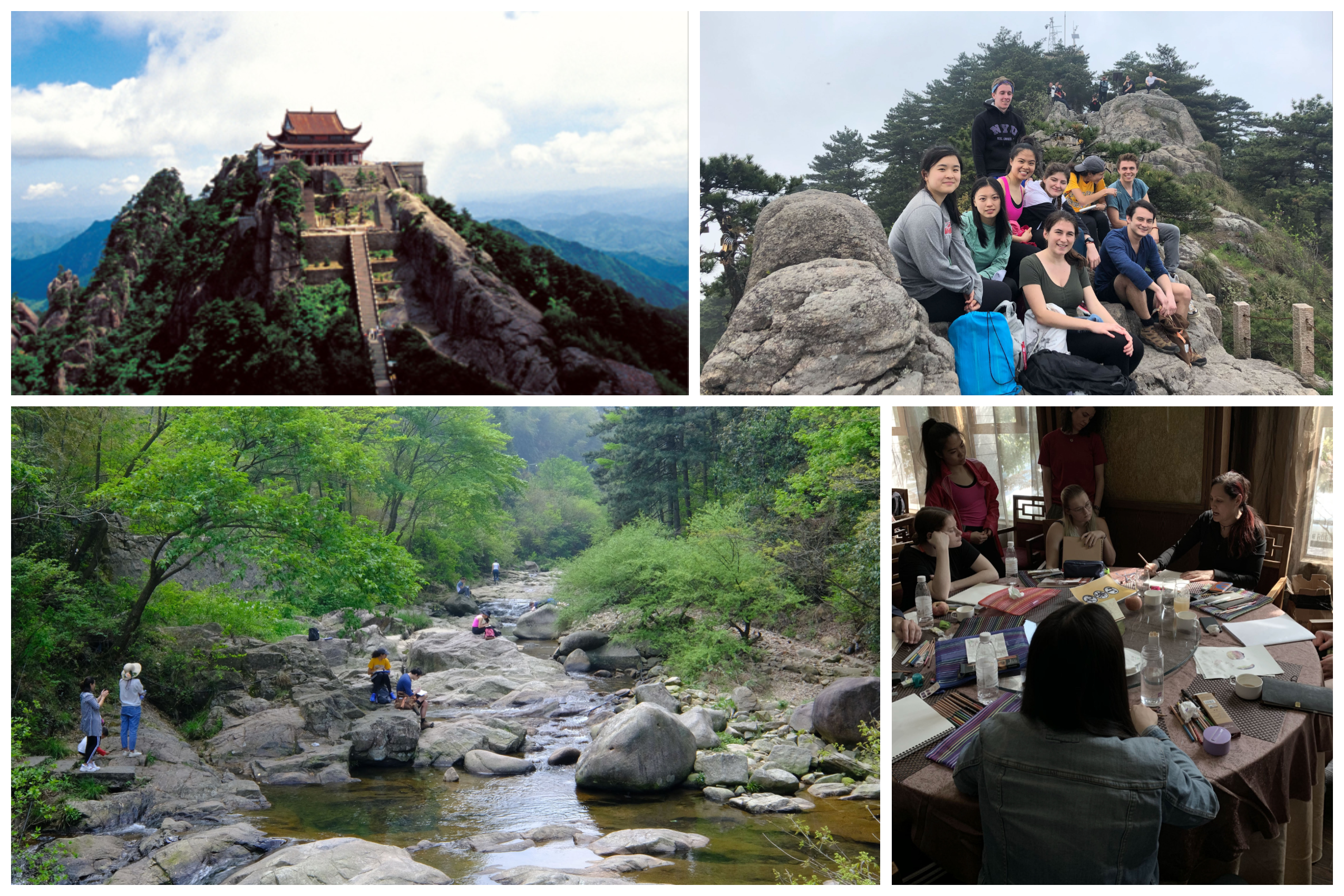Published October 01, 2021
A US Education in a Unique Location
Shanghai, China
As an American visiting Shanghai for the first time, my expectations were all over the place. I had heard so many different perspectives from people and the media. I didn’t know what to think. However, from the moment I landed, I realized that I knew even less than I thought about this unique location. From the impressive modern skyline, expertly planned public spaces, and possibly one of the best metro systems I’ve ever experienced, it was clear to me that Shanghai was worth exploring. Fast forward five years, and I could not be happier that I had the opportunity to live here. Something tells me that this is very similar to how NYU Shanghai students feel when they arrive.
Students who attend NYU Shanghai come from all over the world. Half of them are from China, and the other half are from more than 70 different countries. While they’re very different in many ways, students share the goal of engaging in an exciting educational experience. At NYU Shanghai, students go through a US liberal arts education, while experiencing Shanghai in the 21st century. This means they’ll major and minor as they would in the United States, but that’s just the start. A huge aspect of the education comes from using the resources available in Shanghai and learning in a multicultural environment. It all starts in the residence halls, where an international student will room with a Chinese student during their first year. Next, international students learn Chinese while Chinese students perfect their English. From this point forward, a world of opportunity opens up to all.
Location, Location, Location!
In 50 years China has gone from a mostly rural society to the technological and economic powerhouse it is today. Shanghai, in particular, has been at the center of this rapid change. Words alone can’t describe the massive growth this city has seen since the 1990s, but, luckily, pictures can help!

Shanghai’s strategic location has made it an important gateway into China for the rest of the world. This is evident while walking alongside the beautiful and historic waterfront area known as the Bund. There are stunning European-style buildings lined up overlooking the Huangpu River. They are beautifully contrasted with the modern Shanghai skyline across the river, with its mega-tall structures, including the second-tallest building in the world. Of course, as all global hubs must have, international cuisines are readily available. For example, your favorite New York–style pizza, Italian food to die for, and some of the most authentic Turkish food outside of Istanbul. Not to mention all of the delicious regional varieties of Chinese food from all over the nation.
The students consider the city their campus, thanks to our unique location in Shanghai. We are so excited to extend this to our new campus, which will open next fall. Its design will mix Western and Chinese architecture to embody our school’s collaborative spirit. It will be located where the Shanghai World Expo took place in another central hub. This area will see many recreational and cultural amenities at its doorstep. Some examples include the Oriental Sports Center, brand-new malls, museums, and parks. Similar to our current campus, the new campus will be right by a major metro stop. Itʼs very important to continue to allow our community continued easy access to the rest of the city.
City (and Country) as Classroom
The city’s accessibility not only makes it appealing for students to explore but essential for professors to include in their classes. For example, students in Professor Anna Greenspan’s The Cultivated City class will explore Shanghai’s various urban green spaces. They will also work toward planting an urban garden at our new campus. In Professor Lena Scheen’s Shanghai Stories, students read fiction that takes place in Shanghai. Then they use the city as a classroom to experience the city’s past. Through our This Is China workshops, students can even learn traditional culture in a more hands-on approach. Think pottery, dim sum cooking, Chinese opera, and even martial arts!

Additionally, there are many opportunities to travel out of the city to enhance the learning experience. Students can sign up for the Jiuhua Mountain Writing Retreat in Jiuhuashan (九华山), one of China’s four holy Buddhist mountains. Here, students can peacefully reflect upon themselves. As a change of pace, students might also consider the Innovation, Shenzhen Style course, which includes an optional two-day trip is Shenzhen, the Silicon Valley of hardware. While there, students will interact with professionals in order to understand the manufacturing process. They will even be able to build actual prototypes in the world’s largest electronics market!
Because learning isnʼt limited to the classroom, the rest of the country is also open for exploration. With the largest high-speed rail network in the world, China is wide open. Students will often find themselves traveling for fun and meeting locals from all over. Between the beaches in the south, mountain ranges to the west, and deserts up north, there is so much to explore.

Life in Shanghai
While the end of a great trip is usually the sad part of the journey, this is not the case when coming back to Shanghai. Why? Because life in Shanghai is convenient! Everything, from grocery shopping and ordering on Taobao (China’s answer to Amazon) to paying bills, can be accomplished with just a few apps. Most importantly, almost all payments are connected to a QR code that can be used anywhere. This is used so much that if you are paying for anything with hard cash, you’re likely holding up the line!
Students who like to ride bicycles will be happy to find plenty of shared bikes on every other street corner. What’s more, there’s no shortage of bike lanes! As mentioned above, the reach of the metro is also very impressive, and it allows people to move across the city in just a few minutes. This way, you can easily find exciting spots around the city, including various concept cafes, traditional Chinese architecture, and vast amounts of green spaces. You can check out what’s new at the M50 art district or make your way to the former French Concession for some crepes. If the day is nice, you might go take pictures with your friends at a traditional Chinese garden. As the sun sets, you may want to watch it while enjoying one of Shanghai’s delicious rooftop restaurants.

Final Thoughts
All in all, these immersive opportunities get to the heart of what a US liberal arts education promises students. To allow students to explore, analyze, and, above all, think critically about their environment and themselves. Coming to Shanghai has the added effect of truly challenging students to go outside their comfort zone, engage with other cultures, and grow to their fullest potential. Of course, that includes really enjoying the city and finding your niche in it. Regardless of who you are and what experiences you’ve had with China, if you can visualize yourself in this unique location—and are excited about it—thatʼs the only thing that matters. If this is the case for you, then perhaps Shanghai’s future may be a part of yours.



